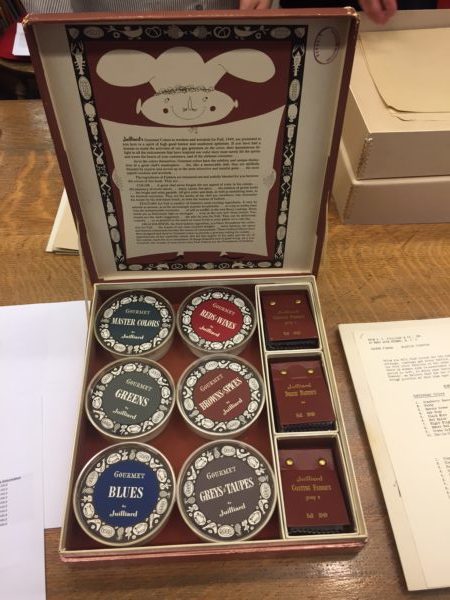What are the fashion staples any university girl must have in her wardrobe?
If you were one of the lucky young women attending university in the 1940s, numerous magazines had entire sections dedicated to helping you budget and obtain the perfect collegiate capsule wardrobe. I recently came across a number of these articles from both Women’s Wear Daily and American Vogue, dating from 1940 to 1946. The recurrent theme is how to achieve the most variation in a wardrobe with the fewest essential items. Naturally, there was wide variation in what was deemed essential, and proposed budgets varied from $100 for an austere annual collegiate wardrobe (Vogue, August 1941) to a lavish $1,400 (Women’s Wear Daily, December 1940). What then is the verdict on the wardrobe essentials for a 1940s female collegian?
Following the lead of the articles from the time, I’m going to break the wardrobe necessities down into categories. These will be: Dresses, Suits, Separates, Outerwear and Extras.

Dresses: A college girl would ‘need’ anywhere from three to ten dresses. In the most austere case of three dresses, she would need one formal dress, for events such as faculty dinners or serious dates. The other two dresses would be day dresses, either in cotton, rayon or silk, and preferably one in wool. For a girl with a larger budget, two nice dresser were necessary, one for formal events, and one ‘dressy black crepe, for fall date and town wear.’ She would also have at least two wool, two or three rayon or silk prints and four to six cotton dresses.
Suits: The most highly advertised item was a fashionable suit. The girl on a $100 budget might have one suit, while more fortunate girls would have three to six. In 1942, Vogue listed tweed as the number one must-have suit material, but in 1946, it had been ousted by gabardine, preferably in black, navy, brown or beige. In 1946, the tweed suit was still one of the top preferences, however, and was seen as ‘an intrinsic part of campus wardrobe.’

Separates: Separates were highly valued by college girls, as they added much variety to a constricted wardrobe. These items fell into their own categories: blouses, sweaters, skirts and trousers. At least three blouses, a mix of white collared masculine shirts and feminine styes, were recommended. A simple wardrobe would have at least two sweaters: one long sleeve turtleneck in a subtle colour such as black or grey, or a bolder red, and another sweater in a college-specific colour. The most minimal wardrobe would feature two pleated skirts; a better funded one would have four, in plaid, pastels or checks. Finally, trousers. While never listed as essentials, tailored slacks, pedal-pushers and mens bluejeans were listed as ideal additions to a collegiate wardrobe. Some universities showed approval with loose regulations on length and styles.
Coat: All the articles agree that every college lass needed at least one good wool coat. Brown, camel hair and beige box coats are recommended.
Extras: Finally, all the extra bits that pull a wardrobe together. Undergarments aren’t included in the descriptions, except where specific mention of the importance of stockings is made. The importance of a good hat and gloves is very explicit, however. Minimalist wardrobes suggest one hat and a turban, with one pair of versatile all-weather gloves. Berets in dark or bold colours are suggested, as are feminine felt riding hats. To finish off a college wardrobe is a sturdy pair of shoes. One or two pairs of oxfords or ‘moccasins’ are essential.
So, do you have all your college wardrobe essentials?
Both images accessed via Proquest.




